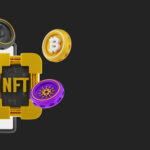The Metaverse stands out as one of the most interesting and rapidly growing domains in the technology industry. It is changing the way individuals foster social connections, their approach to work and leisure, as well as their engagement with the internet. The Metaverse is poised to expand further this year, especially with advances in technology, virtual reality (VR) and augmented reality (AR) as well as blockchain. Numerous trends are set to shape the Metaverse in 2025 as companies, users and investors alike rushed to explore the possibilities.
The article covers the most important trends of the Metaverse, starting with the most advanced gaming technology and then focusing on the growing interest in virtual spaces, as well as digital assets that are not governed by a single authority.
Growth of Virtual Real Estate
What is Virtual Real Estate?
Virtual real estate is the metaverse-defined analogy of land or property parcels. Just like tangible property, these can be bought, sold and developed. The value of virtual real estate is steadily increasing aided by technological advances in VR and blockchain.
Why It’s Trending
- Increased Investment: Virtual real estate is capturing the attention of major corporations, influencers and investors who are purchasing land on platforms like Decentraland, The Sandbox, and Somnium Space.
- Digital Innovations: Businesses are creating virtual shopping and entertainment centers, immersive environments where users can socialize, shop, or work.
- In-Game Economy: Several games now permit players to purchase land and other assets, contributing to a growing in-game economy.
Impact This Year
This year, expect a spike in investments for virtual real estate, as more platforms will facilitate buying, selling, and monetizing virtual property. With brands opening their virtual stores and real estate becoming a vital part of the Metaverse’s infrastructure, virtual land will also emerge as a crucial asset.
Increased NFT Adoption in the Metaverse
What are NFTs?
Non-fungible tokens (NFTs) are digital assets stored on a blockchain and are unique in their kind. NFTs also grant the ownership of a particular asset, be it artwork, a piece of music, or a digital good, which cannot be exchanged for something of equal value.
Why It’s Trending
- The NFT space has seen explosive growth as part of the metaverse economy, and virtual artwork, fashion, and property are increasingly being minted as NFTs.
- Metaverse goods will also increasingly be proprietary with users participating in the creation and selling of avatar wearables, digital artwork, and skins for virtual environments, powered by NFTs.
- Creator Economy: In virtual worlds, NFTs will be used by artists, creators, and developers to monetize their work.
Impact This Year
By 2025, we will continue to see NFTs becoming fully adopted in the Metaverse with a more pronounced emphasis on virtual fashion, digital artwork and collectibles, and limited edition virtual items. Look forward to the development of more marketplaces that will allow users to trade, buy, and sell NFTs associated with Metaverse activities.
Merging AR and VR: a New Dimension of Augered Virtual Reality
What is AR, and VR?
Using AR glasses or smartphones, Augmented Reality (AR) shifts perspective by integrating or overlaying digital components with real-world elements.
Virtual Reality (VR) involves fully immersive environments that people can access through VR headsets.
Why is it Trending?
- Augmented Reality (AR) and Virtual Reality (VR) focus on improving the Metaverse experience so users can participate in more lifelike interactions.
- Companies are trying to blend the real life with the virtual world, thus merging AR and VR to create Mixed Reality (MR).
- VR and AR technologies are becoming more widely used and adopting everyday use because of the reduction in the price and accessibility of the equipment.
Impact This Year
This year, the use of AR/VR technologies in the Metaverse will enable deeper immersion using sophisticated headsets and hardware. New tools and platforms should be coming out which will enable a seamless transition between the analog and the digital worlds.
The Rise of Metaverse Platforms that are Decentralized
What does a Decentralized Metaverse Look Like?
A Decentralized Metaverse uses a form of a Metaverse that operates in a Decentralized manner, using Blockchain technology. A Metaverse operates as a combination of a digital and a virtual world wherein the latter is not governed by a singular company or corporation. The users are in control of their assets and experiences.
What’s Fueling the Trend
- User Empowerment: Influence of users in a Decentralized Metaverse where users have ownership of their information, data, assets and virtual experiences is completely in their control.
- Integration of Blockchain: The Metaverse’s “Blockchain integration is going to be a gamechanger,” which is monetizing their governance. Many projects spend so much time integrating a governance system which defeats the purpose of Decentralization all together.
- DAOs: Decentralized Autonomous organizations as their name suggest, enables the users to vote for the governance of the virtual worlds therefore giving control of governance to the people.
Impact this Year
The emergence of Metaverse platforms is bound to not only give users control over the virtual worlds but participation in governance and decision-making as well. It is a revolution of the users and the technology revolving around the Decentralized spaces that will allow the seamless creation and governance over the virtual spaces.
Metaverse as a Social Platform
What is Metaverse Socializing?
Socializing in the Metaverse allows users to participate in virtual activities such as attending events or gaming, shopping, or attending concerts in 3D environments.
Why It’s Trending
- Virtual Social Events: There is an increased need for concerts, conferences, and meetups to be hosted in the Metaverse as a result of Covid 19.
- Persistent Online Identity: People are now spending more time in virtual worlds creating social identities, interacting, and engaging in persistent online spaces.
- Brands in Virtual Spaces: Numerous brands are developing virtual experiences such as fashion shows and pop-up shops where users can socialize and engage with the products.
Impact This Year
This year the Metaverse will serve as a social hub for virtual gatherings and interactions for entertainment. People will be able to socialize in virtual spaces and attend events such as concerts and fesstivals. Social offerings will be expanded by major platforms and users with avatars will be more actively engaged.
Virtual Workspaces and Collaboration Tools
What are Virtual Workspaces?
Metaverse virtual workspaces are digital environments in which individuals can meet, work, and collaborate in real time with the use of avatars and digital tools which emulate physical offices.
Why It’s Trending
- The Metaverse enables companies to manage online collaboration strategies more efficiently, something that has become increasingly important with the acceptance of remote work.
- The Metaverse also allows meeting and collaboration to be carried out in a virtual and more engaging than the traditional video call. The absence of physical interaction in the workplace greatly reduces the interaction and collaboration.
- Employees can collaborate on meetings, brainstorming, and even conferences with more ease and engagement than with traditional video-conferencing tools. The Metaverse allows employees to conduct and collaborate on their projects in immersive 3D virtual spaces.
Impact This Year
Employers will be more likely to accept meetings and brainstorming in virtual workspaces. This will drive the companies to adopt the Metaverse as the preferred virtual workspace.
The emergence of virtual goods and Digital Fashion
What is Digital Fashion?
The clothing and the accessories that are made for the avatars of the people and used in the Metaverse are referred to as digital fashion. These digital fashion items are known to be Novel Digital Tokens that can be exchanged in the digital market.
Why It’s Trending
- As employees spend more hours in the Metaverse, their avatars will morph into a part of their identity, and digital fashion enables self-expression and brand interaction.
- Due to the increasing rarity of digital fashion, many designers are producing and releasing them as a Novel Digital Token fashion. This, in turn, will add to the value of virtual clothing.
- Partnership with Fashion Brands: Gucci and Prada are already launching digital clothes for avatars in the Metaverse. Other traditional fashion houses are expected to follow.
Effect In 2023
By 2025, we expect even more fashion houses to join the Metaverse. Brands will start working with artists and fashion designers to create virtual wear. We also expect fashion shows and avatars will include the ability to flaunt their virtual wear to their heart’s content.
FAQs: Metaverse Trends for 2023
Q1. What’s the Metaverse?
A Metaverse is a digitally owned, decentralized virtual world. Various activities, including gaming, shopping, socializing, and interacting with other users with digital assets, make the Metaverse.
Q2: How are NFTs used in Web3?
NFTs are used in Web3 for digital ownership, decentralized marketplaces, virtual assets in gaming and the Metaverse, and community governance.
Q3: What role do NFTs play in the Metaverse?
NFTs represent ownership of virtual land, in-game items, and digital goods, enabling users to buy, sell, and trade assets within decentralized virtual worlds.
Q4: Can NFTs be used in decentralized finance (DeFi)?
Yes, NFTs can be used as collateral for loans, staked for rewards, or traded in DeFi platforms, integrating them into decentralized financial ecosystems.
Q5: Why are NFTs important for the future of Web3?
NFTs enable true ownership of digital assets, enhance privacy and security, and create new ways for creators to monetize content, all within decentralized Web3 ecosystems.



